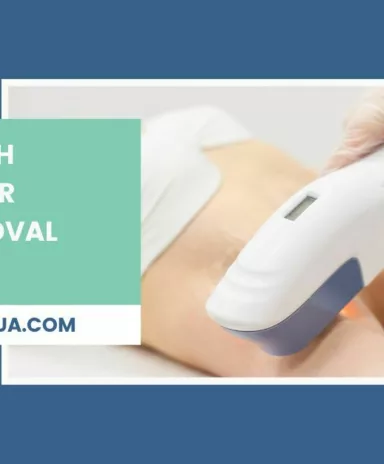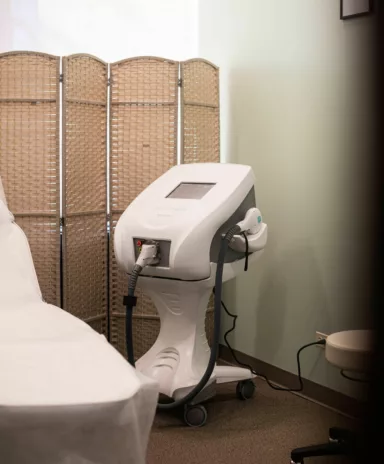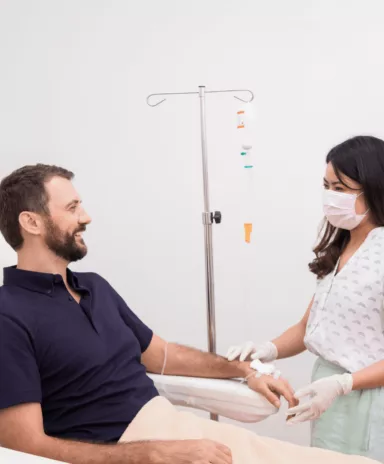
IV Infiltration Treatment: A Comprehensive Guide
IV drip therapy is a standard treatment at many health and wellness centers worldwide. This type of therapy can benefit those with certain medical conditions such as cystic fibrosis, Crohn’s disease, ulcerative colitis, and colon cancer. These treatments can also help to hydrate your body, restoring essential fluids and electrolytes to help you feel better. But as with any treatment, there are risks, and one of the risks related to IV drip therapy is IV infiltrations. Here’s what you need to know about IV infiltration treatment guidelines.
What is an infiltrated IV?
Per the National Library of Medicine, IV infiltration is the inadvertent administration of a non‐vesicant solution or medication into surrounding tissues of the intravenous (IV) catheter. Infiltration is a common complication that can arise in IV drip therapy or infusion therapy involving an IV catheter. But we know that what we just said might be a bit complicated as it sounds like an infiltration definition in medical terms. So, you are likely still wondering what is an infiltrated IV, especially if you don’t have a medical background. So, we’ll try to explain it a bit more clearly.
A non-vesicant solution does not cause ischemia or necrosis. Ischemia is a severe condition when some parts of your body, like your heart or brain, don’t get enough blood. Necrosis occurs when tissues in your body die off. And to ensure we’re all on the same page with some of the terminologies here, it might help to know that a vesicant fluid irritates the tissue, referred to as extravasation.
To summarize, IV infiltration occurs when the solution, such as that used in an IV drip therapy, comes into contact with your catheter's surrounding tissues, not just the intended vein. This can happen due to the following circumstances.
- The catheter becomes clogged
- The catheter comes out unexpectedly or improperly removed
- Irritation from the IV drip process causes IV fluids to leak out of the vein or artery.
What are the side effects of IVs?
IV drip therapy can provide many benefits. But despite the reason you may be receiving treatment, the truth is that there are side effects, including but not limited to IV infiltrations. Though side effects are rare and rarely life-threatening, all patients should understand the potential risks.
And though side effects may seem like a reason not to seek IV drip therapy, patients should know there are side effects to any medical treatments, wellness programs, etc. However, it's always a good idea to discuss any wellness treatments you are considering, with your primary care physician, before proceeding.
The most common side effects of IV drip therapy include:
- Entry site infection
- Blood clots
- Rashes
- Vein inflammation and bruising
- Headaches
- Heart attack
- Stroke
- Air embolism
- Anxiety
- Allergic reaction at the entry site
What are the symptoms of IV infiltration?
IV treatment is a highly effective way to quickly get various fluids into the body. Fluids can be administered over time in small doses, and they work quickly. Further, these treatments take effect much faster as the digestive system does not alter them.
However, unfortunately, IV infiltration is common. In fact, an estimated 50% of IVs fail, and 20% of those failures are caused by infiltration or extravasation. Though the staff at ElevateMuà are highly trained in handling IV infiltrations, it is still vital that patients know what the symptoms of IV infiltration are.
Here are the common indicators you have experienced IV infiltration from your IV drip therapy.
- IV fails and is no longer delivering fluids to the intended destination
- Redness around the entry site
- Lighter skin around the entry site (called blanching)
- Pain or tenderness in the area of the entry site
- Cool skin temperature around the IV entry site
Complications of IV infiltration
If you are seeking IV therapy in Schaumburg, we want you to understand the potential complications of IV infiltrations. Though patients can experience a wide variety of benefits from their IV treatment, including a boost of electrolytes and fluids, a boost to the immunity system, increased energy, hangover remedies, relief from migraines, a more youthful experience, and more, it is essential to weigh the potential disadvantages that can come if there is a complication.
The most common complications related to IV infiltration include:
- Infections
- Skin damage, including scars, sores, blisters, and ulcers
- Permanent nerve damage
- Ruptured veins
- Diminished use and amputation of the extremity
Stages of IV infiltration
IV infiltration and its seriousness is measured in stages, also called grades, ranging from zero to four.
Stage |
Criteria |
0 |
No symptoms |
1 |
Skin appears pale or white (blanched) Edema < 1 inch in any direction Skin around affected area is cool to the touch May or may not be painful |
2 |
Skin appears pale or white (blanched) Edema 1 to 6 inches in any direction Skin around affected area is cool to the touch May or may not be painful |
3 |
Skin appears pale or white (blanched), translucent in color Edema >6 inches in any direction Skin around affected area is cool to the touch Mild to moderate pain Possible numbness at entry site |
4 |
Skin appears pale or white (blanched), translucent in color Skin feels tight, may be leaking Skin is discolored, bruised, and/or swollen Edema >6 inches in any direction Deep pitting tissue edema Impairment of the circulatory system Infiltration of any blood product, irritant, or vesicant Moderate to severe pain |
Per the National Library of Medicine, stage two is the most commonly observed, followed by stage three and then stage one. Stage four complications are rarely reported. However, you should know that stage four complications can include muscle necrosis, skin loss, and tendon necrosis that might require surgery or amputation.
How to treat IV infiltration
Treatment for IV infiltration may include removing the vascular access device, elevating the affected extremity, and applying a warm or cold compress. You can anticipate the following steps for infiltrated IV treatment.
- The affected site will be elevated as much as possible to reduce or prevent swelling
- The provider will apply a cold or warm compress (based on the fluids that were part of the IV drip treatment) for 30 minutes every two to three hours - in many cases, this IV infiltration treatment can be applied at home, provided the condition doesn't seem to worsen
- When applicable, medication for extravasations will be given within 24 hours for the most effectiveness
As few IV infiltrations are severe, despite the high complication rate, those who have experienced an infiltration can usually go home after being monitored for a determined period at the hospital, doctor's office, or wellness center.
What to do when an IV infiltrates
If you are experiencing any of the symptoms mentioned earlier, during your IV drip treatment, it is important that you inform your practitioner immediately. At this point, they will do the following to begin infiltrated IV treatment:
- Stop your infusion
- Remove the IV line
- Mark the affected area with a marker
- Take a photograph of the affected area - IV infiltration pictures will help the care provider determine if the situation has worsened. The photos will also be placed in your patient file for future reference.
- Apply a cold or warm compress as warranted based on your therapy
- Elevate your arm (or the extremity receiving the IV)
- In certain situations, you may be asked to visit an emergency room for medical treatment
Before and after care for IV infiltration
Though IV infiltration can't be predicted, it isn't uncommon. For this reason, the staff at ElevateMuà will take all possible precautions to ensure a complication doesn't occur during your IV drip treatment. However, all patients should inform the team if they have had issues with IV therapy or treatment.
You may not receive IV drip therapy if you have kidney disease or a heart condition. But, if you can proceed with IV drip therapy and experience an infiltration, you will be observed for a determined period before it is decided if you can go home to rest or must receive medical care.
If you are sent home, you will be informed of the following IV infiltration after-care instructions.
- Limit physical activity for 24 hours after infiltration and rest as needed.
- Raise your arm above your heart or elevate it on a pillow when seated.
- Apply a warm or cold compress on the site for 20 minutes, two to three times per day.
- Keep the site clean and dry. Change any bandages if they get dirty or wet.
- Check the area around the IV site often to see how it looks, and make a note if there are any new signs of infection.
- Remove jewelry from the affected arm and wear loose-fitting clothing.
- Avoid using lotion, soap, or other skincare products at the IV site until permitted to resume use.
- Take medicine for discomfort as directed. Only take medicinations as prescribed or recommended by your healthcare provider and be sure to follow all precautions and guidelines.
ElevateMuà is your partner for IV therapy in Schaumburg
Whether you are seeking IV drip therapy in Schaumburg for rehydration, to aid in weight loss, or to help treat nutrient deficiencies due to chronic illness like celiac diserase, Crohn’s disease, colon cancer, migraines, or more, the team at ElevateMuà can help. Our team has received all of the necessary training to help ensure your IV drip treatment goes as smoothly as possible. The treatment takes 30 to 60 minutes and is extremely beneficial in ridding your body of unwanted toxins. Should an IV infiltration occur, our team is properly equipped to handle.

How Much Does Laser Hair Removal Cost?
Read More
What is Needle Free Mesotherapy?
Read More
IV Infiltration Treatment: A Comprehensive Guide
Read More
The Cost of Laser Stretch Mark Removal: Is it Worth to Do?
Read More
Laser Hair Removal For Dark Skin: 7 Things You Need to Know
Read More
Understanding the Average Cost of Laser Acne Scar Removal
Read More
Everything You Need to Know About Non-Surgical Vaginal Rejuvenation
Read More
Effective Ways to Tighten Loose Belly Skin
Read More
The Complete Guide to Laser Hair Removal Everything You Need to Know
Read More
What To Expect At Your First Vitamin IV Infusions?
Read More
Body Contouring and Circumferential Reduction with Viora
Read More
Hangover IV Drip Infusion – A Fabulous Solution or a Fad?
Read More
